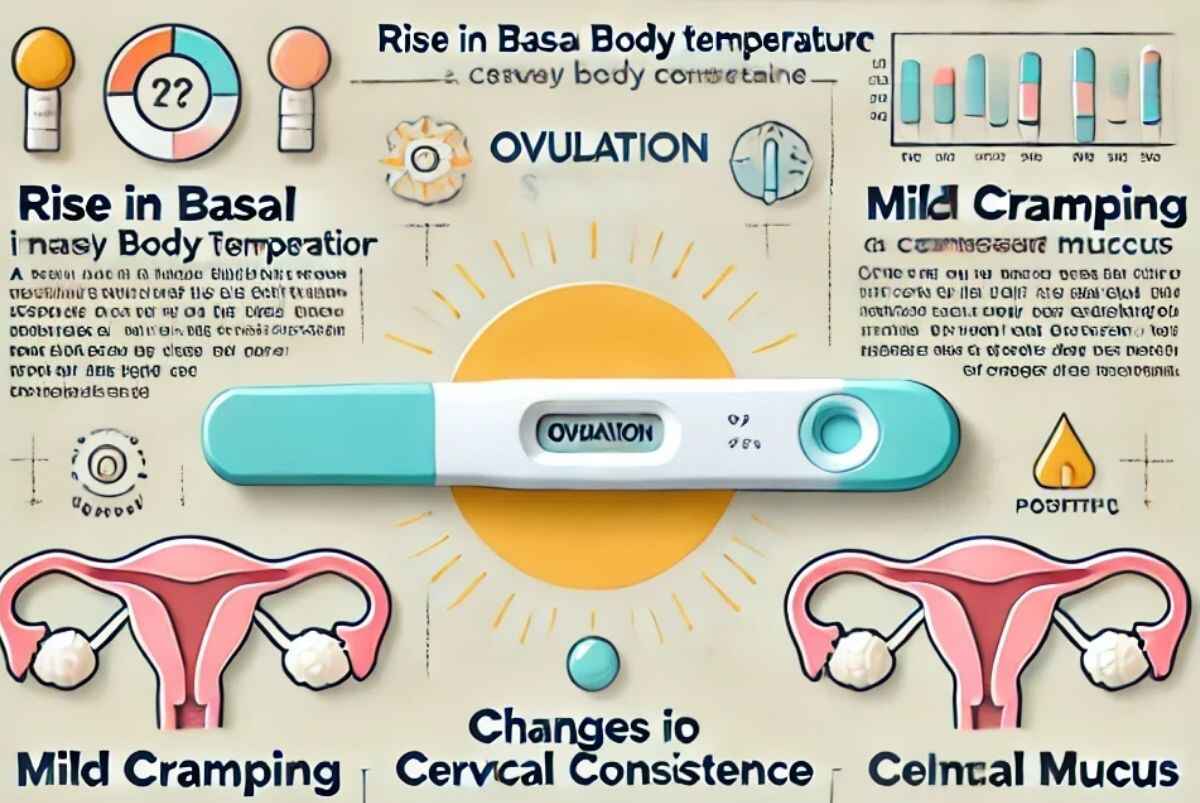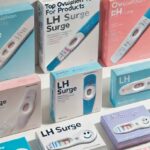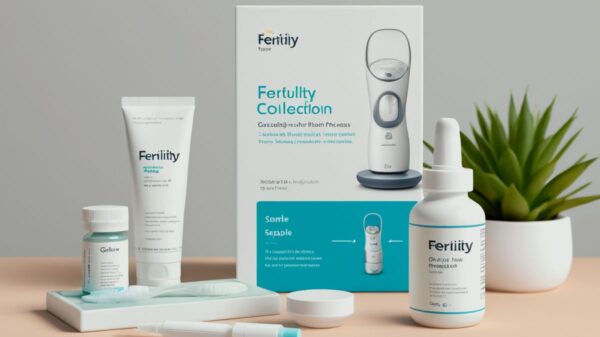When you’re on a fertility journey, understanding your cycle becomes essential, and one of the key components of this is Positive ovulation. A positive ovulation test signifies a crucial moment in your fertility cycle, marking your peak fertility window. However, for many, interpreting and responding to a positive result can feel overwhelming. This article aims to demystify what a positive ovulation test indicates, the symptoms you might notice, diagnosis techniques, and potential causes behind these results. We will also introduce leading brands that offer positive ovulation test solutions to help you navigate this journey with confidence.
What Does a Positive Ovulation Test Indicate?
Ovulation tests work by detecting levels of luteinizing hormone (LH) in your urine. A surge in LH levels triggers the release of an egg from the ovary, typically within 24 to 36 hours. When an ovulation test shows a positive result, it means your body is preparing to release an egg, signaling a critical time for those trying to conceive.
A positive ovulation test offers a guidepost for timing intercourse or planning fertility treatments. However, it’s important to understand that while these tests are highly reliable, various factors, such as hormonal imbalances or medical conditions, can influence the accuracy of the results.
Symptoms Related to Ovulation
A positive ovulation test is often accompanied by distinct physical changes that can signal ovulation. Recognizing these symptoms can help reinforce what the test indicates.
Mild Pelvic or Abdominal Pain (Mittelschmerz)
Many women experience a sensation known as mittelschmerz—a German term meaning “middle pain.” This refers to the mild discomfort or sharp pain that occurs on one side of the lower abdomen, coinciding with the release of an egg. The pain usually lasts from a few minutes to a few hours and can vary in intensity from cycle to cycle. While not everyone experiences it, tracking this pain can provide another indication of ovulation.
Change in Cervical Mucus
The texture and consistency of cervical mucus change as you approach ovulation. During peak fertility, the mucus becomes clear, stretchy, and resembles raw egg whites. This change aids in sperm mobility, making it easier for sperm to reach and fertilize the egg. Monitoring these changes alongside ovulation testing can further enhance fertility awareness.
Heightened Sense of Smell
Some individuals notice an increased sensitivity to scents around ovulation. While this symptom might seem subtle, it reflects changes in hormone levels and can signal that ovulation is near. Heightened senses during this phase are thought to be part of the body’s reproductive readiness.
Breast Tenderness
Hormonal fluctuations during ovulation can lead to breast tenderness or increased sensitivity. Estrogen and progesterone levels rise during this period, causing temporary discomfort. The degree of tenderness can vary from person to person and cycle to cycle, serving as a helpful cue for some individuals.
Increased Libido
Many women report a natural rise in libido during ovulation. This increase is often hormonally driven, as the body naturally prepares for conception by signaling fertility through heightened sexual desire. This biological response aligns with the body’s reproductive timing.
Diagnosis Techniques for Ovulation
Understanding and confirming ovulation through different techniques can provide a fuller picture of fertility and offer insights for those trying to conceive. Below are some common methods for diagnosing ovulation:
Ovulation Test Kits
Ovulation test kits are among the most widely used tools for tracking fertility. They detect LH surges in urine, signaling that ovulation is imminent. These kits are easy to use and available over the counter. Most involve either a test strip or a digital reader. When the LH level reaches a certain threshold, the test displays a positive result. Leading brands like Clearblue offer digital ovulation kits with easy-to-read displays, helping users accurately identify their peak fertility window.
Basal Body Temperature (BBT) Charting
Basal body temperature (BBT) charting involves tracking your body temperature at rest every morning before rising from bed. After ovulation, a rise in progesterone causes a slight increase in body temperature, usually ranging from 0.5°F to 1°F. By consistently recording BBT over multiple cycles, you can identify ovulation patterns and predict your fertile days. While BBT charting requires diligence and daily measurement, it can complement ovulation test results.
Cervical Mucus Monitoring
Tracking changes in cervical mucus is another way to identify ovulation. As estrogen levels rise during the fertile window, cervical mucus becomes clear, slippery, and stretchy. While this method can be effective for some, it is more subjective than other techniques and may be influenced by factors like hydration, medications, or health conditions.
Ultrasound Monitoring (Medical Setting)
For individuals undergoing fertility treatments or evaluations, ultrasound monitoring may be used to observe follicular development in the ovaries. Transvaginal ultrasounds can track the growth of follicles and confirm when ovulation occurs. This method is highly accurate but usually reserved for clinical settings.
Causes Behind Positive Ovulation Tests
While a positive ovulation test typically aligns with normal fertility patterns, several factors can influence or lead to unexpected results.
Normal Hormonal Fluctuations
LH surges naturally occur during the menstrual cycle, resulting in a positive ovulation test as the body prepares for ovulation. This predictable pattern allows for consistent timing of fertility planning.
Polycystic Ovary Syndrome (PCOS)
Individuals with polycystic ovary syndrome (PCOS) often have elevated LH levels, which can lead to false positives on ovulation tests. This hormonal imbalance complicates ovulation tracking and may require alternative methods, such as ultrasound monitoring, to confirm ovulation.
Perimenopause
Perimenopause, the transition period leading up to menopause, is marked by hormonal fluctuations. These changes can cause irregular cycles and unexpected positive ovulation tests, making it challenging to predict fertility windows accurately.
Hormone-Based Medications
Certain medications, especially those containing hormones like fertility drugs, can elevate LH levels and affect positive ovulation test results. If you are taking such medications, it’s advisable to consult with a healthcare provider for accurate fertility monitoring.
Brand Offerings in Ovulation Tests
Navigating the available options for ovulation testing tools is crucial for finding a method that aligns with your needs and preferences. Here’s a closer look at some leading brands:
- Clearblue: Clearblue offers a range of positive ovulation test, including digital kits that provide clear results, such as a “smiley face” symbol to indicate a positive result.
- Natalist: This brand focuses on sustainability and user-friendly design, offering test kits with eco-conscious packaging.
- Ava Fertility: Unlike traditional test kits, Ava offers a wearable device that tracks multiple fertility indicators, such as temperature, resting pulse, and sleep patterns, to provide a comprehensive view of the menstrual cycle.
- Ro Modern Fertility: Ro Modern Fertility provides accessible, at-home ovulation tests alongside educational resources and telehealth support.
- Easy@Home: Easy@Home’s ovulation testing strips offer a budget-friendly, effective solution for those who need to track LH levels frequently.
Take Charge of Your Fertility Journey
Ready to maximize your chances of conception and gain confidence in your fertility journey? Start by tracking your ovulation with reliable and user-friendly tools tailored to your needs. Explore top ovulation testing solutions from trusted brands like Clearblue, Natalist, and Ro Modern Fertility. Empower yourself with the knowledge to make informed decisions and optimize your fertility window. Begin your journey today—because every step brings you closer to achieving your dreams.











